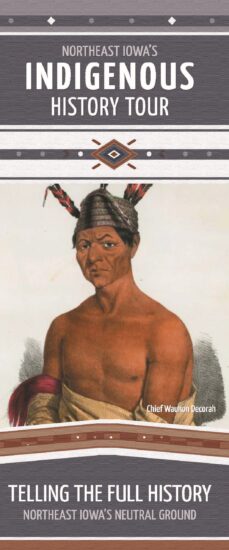Telling the Full History: Northeast Iowa’s “Neutral Ground”

Indigenous communities have called Northeast Iowa home since time immemorial, but the story of their presence in this region is not widely known and, in some cases, is misunderstood
Understanding the “Neutral Ground” is essential to understanding Northeast Iowa during the historic period (post-1673). During periods of westward expansion by settlers across America, many Indigenous tribes were forcibly relocated from their homelands, including the most recent tribe to have a significant tribal presence in Northeast Iowa, the Ho-Chunk (Ho-chungra, Winnebago). In 1840, the Ho-Chunk were moved from their homelands in Southwest Wisconsin into the “Neutral Ground,” a 40-mile wide strip of land stretching southwest across Northeast Iowa that included most of Winneshiek and Allamakee counties.
Other tribes were also relocated to the area surrounding the Neutral Ground. The military post of Fort Atkinson was built to monitor and control the movement and activities of the Indigenous tribes. In 1848, only eight years after their relocation to Northeast Iowa, the Ho-Chunk were relocated again to Minnesota, then South Dakota, and finally to a reservation in northeast Nebraska.
Resources to Learn More
A self-guided driving tour travels across Northeast Iowa between informational panels and significant Indigenous cultural sites and exhibits. Printed brochures are available for free from the Winneshiek County Visitor’s Center in Decorah and the Allamakee County Visitor’s Center in Waukon, as well as some partner locations.
A short informational video is available on YouTube.
The tour, informational panels, and video were developed by Northeast Iowa RC&D in conversation with local communities and under the guidance of the Angel De Cora Museum and Research Center, Winnebago Tribe of Nebraska.
Acknowledgements
This project was funded by National Trust for Historic Preservation’s Telling the Full History Preservation Fund, with support from the National Endowment for the Humanities. Any views, findings, conclusions, or recommendations expressed in this publication do not necessarily represent those of the National Trust or the National Endowment for the Humanities.
Consultation services were provided by the Angel De Cora Museum and Research Center, Winnebago, Nebraska.
Additional funding and project support was provided by


